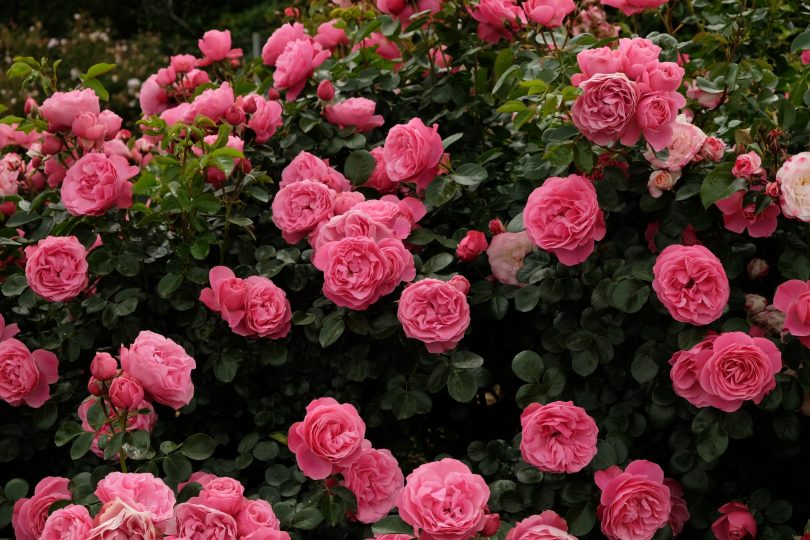Growing a rose garden can be a rewarding and enjoyable experience. Here’s a step-by-step guide to help you get started:
- Choose the Right Location: Roses generally prefer a location with full sun (at least 6-8 hours of direct sunlight per day) and well-drained soil. Make sure the area has good air circulation to prevent diseases.
- Select the Right Roses: There are many varieties of roses to choose from, including hybrid teas, floribundas, grandifloras, shrub roses, and climbers. Choose varieties that are well-suited to your climate and soil conditions, and consider factors like fragrance, color, and disease resistance.
- Prepare the Soil: Before planting, prepare the soil by loosening it to a depth of about 12-18 inches and incorporating organic matter such as compost or aged manure to improve drainage and fertility.
- Planting: Plant roses in the early spring or fall, when the weather is cool and the plants are dormant. Dig a hole slightly larger than the root ball of the plant and set the rose in place, making sure the graft union (the swollen area where the rose was grafted onto the rootstock) is at or just below the soil level. Fill in the hole with soil, firming it gently around the plant, and water thoroughly.
- Watering: Roses need regular watering, especially during dry spells. Water deeply, providing about an inch of water per week, either through rainfall or irrigation. Avoid overhead watering, as this can increase the risk of diseases.
- Fertilizing: Feed your roses regularly with a balanced fertilizer formulated specifically for roses. Follow the instructions on the fertilizer package for application rates and timing.
- Pruning: Pruning is essential for keeping roses healthy and promoting vigorous growth and blooming. Prune in late winter or early spring before new growth begins, removing dead, damaged, or diseased wood and shaping the plant as desired.
- Disease and Pest Control: Keep an eye out for common rose diseases such as powdery mildew, black spot, and rust, as well as pests like aphids, thrips, and Japanese beetles. Practice good garden hygiene by removing and disposing of any infected plant material, and consider using organic or chemical controls as needed.
- Mulching: Apply a layer of organic mulch, such as bark chips or shredded leaves, around your roses to conserve moisture, suppress weeds, and moderate soil temperature.
- Regular Maintenance: Regularly deadhead spent flowers to encourage continuous blooming, and keep an eye out for any signs of problems such as nutrient deficiencies, pests, or diseases.
By following these steps and giving your roses the care they need, you can enjoy a beautiful and thriving rose garden for years to come.


